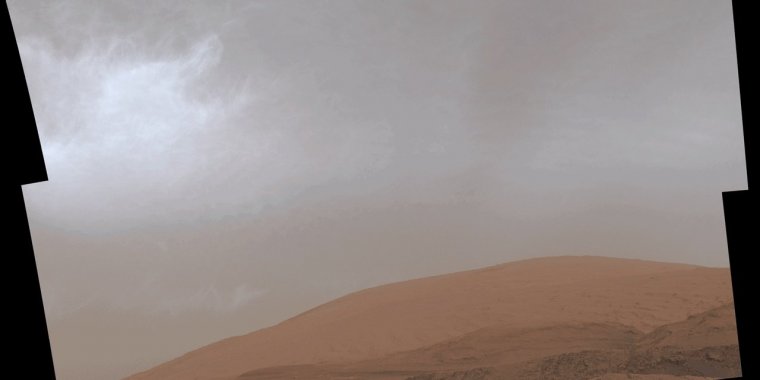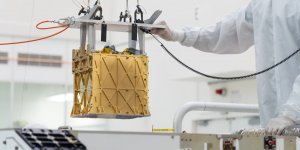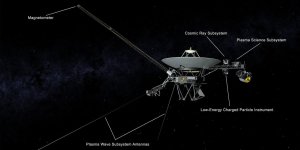| News / Space News |
NASA’s Curiosity Rover Captures Shining Clouds on Mars
Cloudy days are rare in the thin, dry atmosphere of Mars. Clouds are typically found at the planet’s equator in the coldest time of year, when Mars is the farthest from the Sun in its oval-shaped orbit. But one full Martian year ago – two Earth years – scientists noticed clouds forming over NASA’s Curiosity rover earlier than expected.

Curiosity Shows Drifting Clouds Over Mount Sharp. Photo: NASA/JPL-Caltech/MSSS
This year, they were ready to start documenting these “early” clouds from the moment they first appeared in late January. What resulted are images of wispy puffs filled with ice crystals that scattered light from the setting Sun, some of them shimmering with color. More than just spectacular displays, such images help scientists understand how clouds form on Mars and why these recent ones are different.
In fact, Curiosity’s team has already made one new discovery: The early-arrival clouds are actually at higher altitudes than is typical. Most Martian clouds hover no more than about 37 miles (60 kilometers) in the sky and are composed of water ice.
But the clouds Curiosity has imaged are at a higher altitude, where it’s very cold, indicating that they are likely made of frozen carbon dioxide, or dry ice.
Scientists look for subtle clues to establish a cloud’s altitude, and it will take more analysis to say for sure which of Curiosity’s recent images show water-ice clouds and which show dry-ice ones.
The fine, rippling structures of these clouds are easier to see with images from Curiosity’s black-and-white navigation cameras. But it’s the color images from the rover’s Mast Camera, or Mastcam, that really shine – literally. Viewed just after sunset, their ice crystals catch the fading light, causing them to appear to glow against the darkening sky.
These twilight clouds, also known as “noctilucent” (Latin for “night shining”) clouds, grow brighter as they fill with crystals, then darken after the Sun’s position in the sky drops below their altitude. This is just one useful clue scientists use to determine how high they are.
Even more stunning are iridescent, or “mother of pearl” clouds. “If you see a cloud with a shimmery pastel set of colors in it, that’s because the cloud particles are all nearly identical in size,” said Mark Lemmon, an atmospheric scientist with the Space Science Institute in Boulder, Colorado. “That’s usually happening just after the clouds have formed and have all grown at the same rate.” (NASA)
YOU MAY ALSO LIKE





